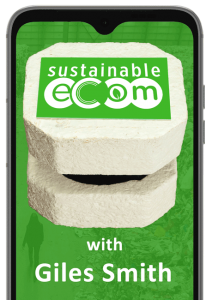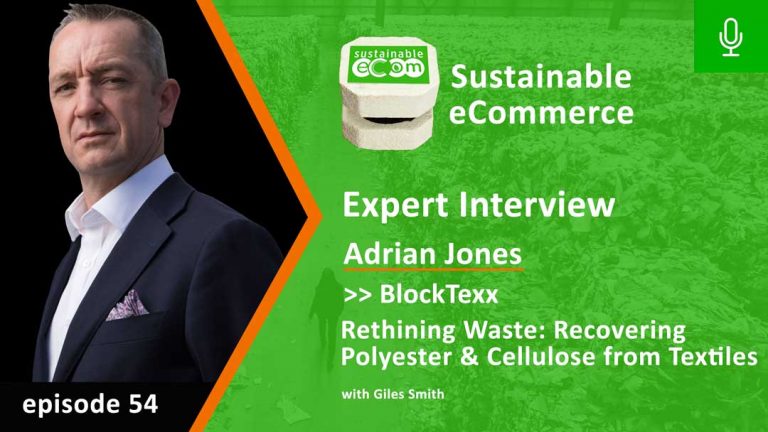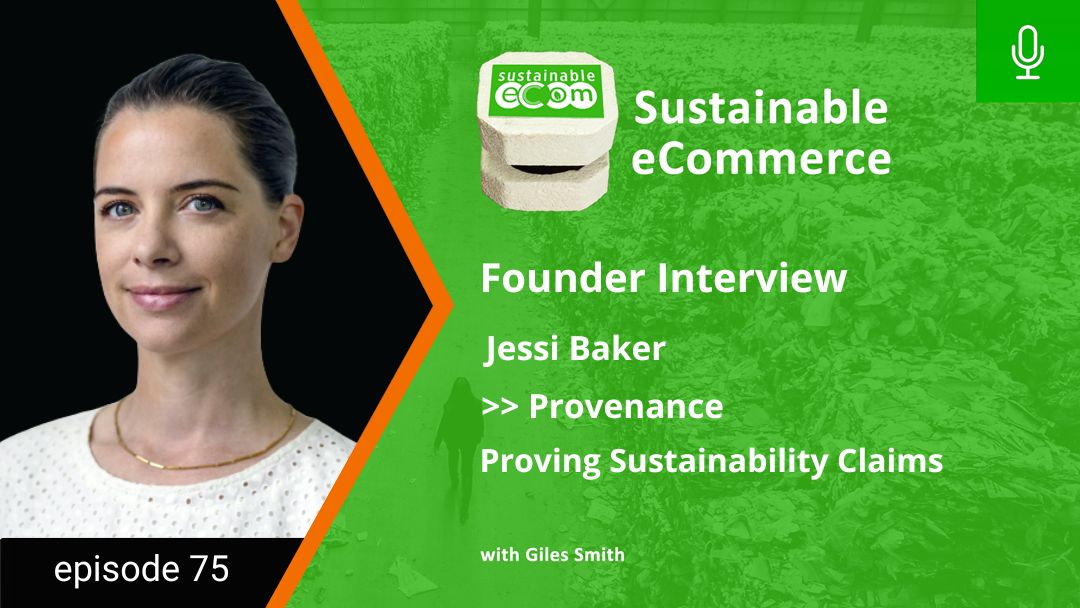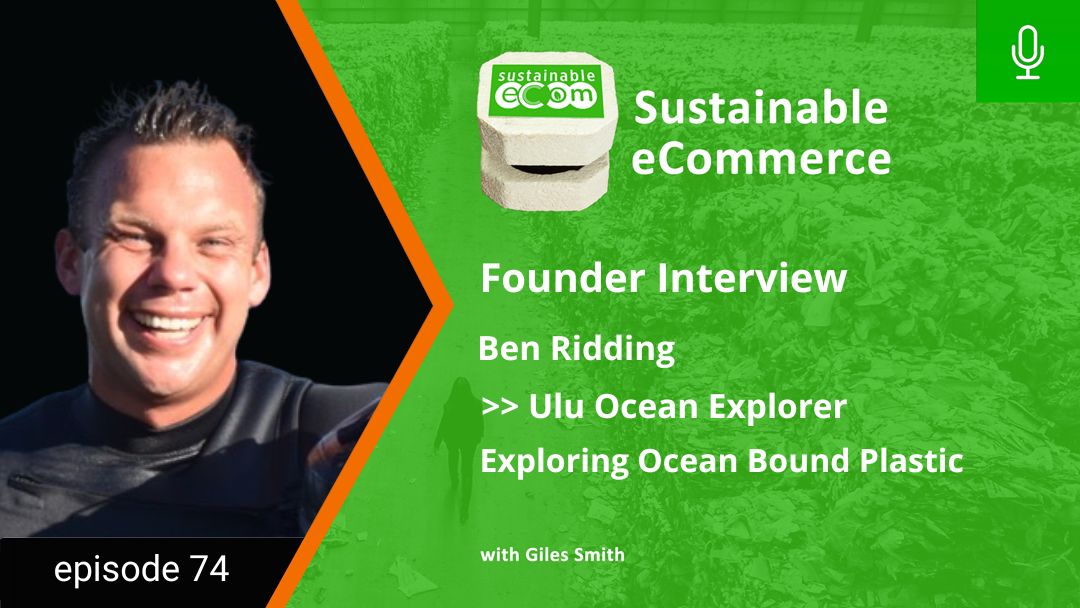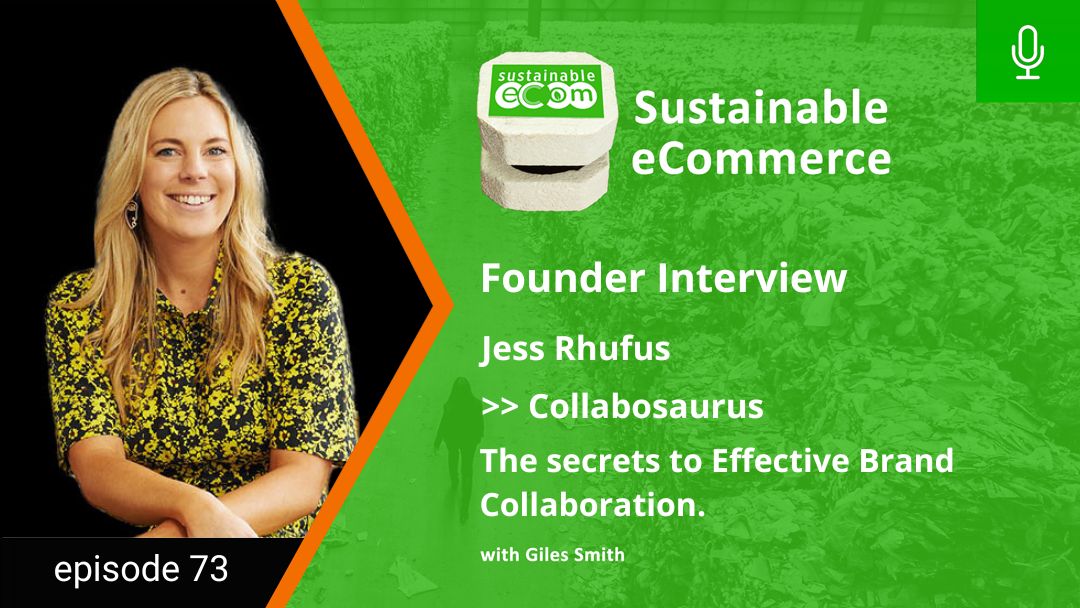EP54 - Sustainable Ecommerce Podcast
This week is the third episode in our mini-series on waste, this week we look at absolutely emerging technology in relation to chemical recycling of textiles.
Chemical recycling per se isn’t new. There are a few amazing companies overseas like Renewcell that can take cellulosic textiles and recycle those into new yarn. But until now, there has never been a solution to blends.
Enter my guest this week. Adrian Jones is the co-founder of Queensland-based chemical recycling company BlockTexx. Despite being what I think you would still call a start-up, they’ve already proved they can handle 85% of the typical textile fibre types, and are handling about 4000 tonnes of textiles this year.
They have developed an incredibly exciting technology that I think we’ll see becoming more and more important part of the textile recycling supply chain in the years to come.
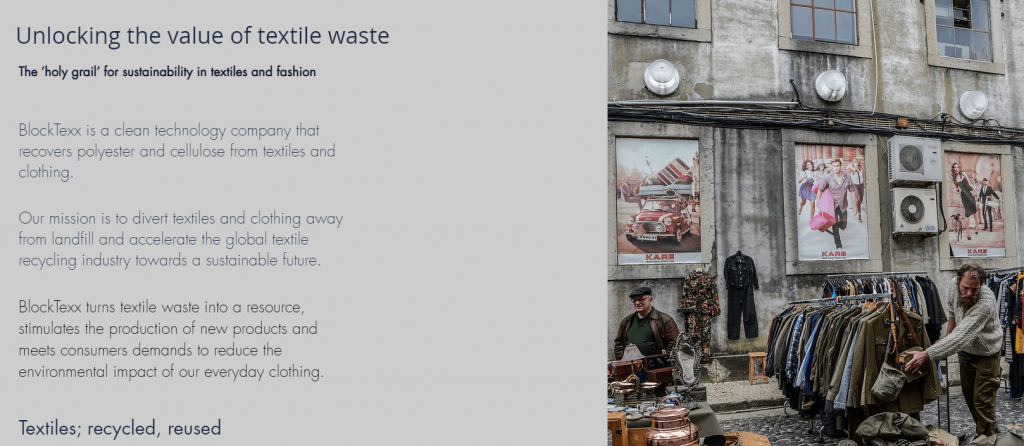
About Adrian Jones
Adrian started his career in retail in the UK, and worked as a buyer in a variety of large retailers before coming to Australia. In Australia, he worked for Myer initially, then ran Red Group (Borders & Angus & Robertson), ending out his corporate with stints as the at CEO APG & Co, and finally CEO of Charles Parsons.
Through the journey, Adrian became concerned about the quantity of textile being overbought in the retail supply chain and treated as waste, even though they have an intrinsic value. He started BlockTexx along with partner Graham Ross to find a solution to this problem.
Why do you think consumers haven’t considered textile recycling more carefully?
We all know that littering is bad. We are all educated to put bottles in the trash, but no-one is spending time educating that in fact clothing is the same. Chemically, a polyster football jersey is exactly the same as a plastic bottle, so it should be treated the same. Yes as consumers we have a different relationship with our clothes. We become attached to them, and consider that they do no harm.
The other thing is that we are taught that giving clothes another good home via charity shops is good – and it is, but the reality is that charity shops actually sell only 20% of what they receive. The remaining 80% is either shipped overseas (most of which ends up in landfill), or landfilled here in Australia. The difference is that unlike normal business that has to pay tip fees to get rid of stock, charities are reimbursed so it costs them nothing to treat them like waste.
Why has it taken so long for brands to start thinking about what happens to their products at the end of life?
Part of this is that until BlockTexx built a scale solution, any brand that makes blends really had no option for recycling. Landfill was really the only option.
Historically, the textile industry has been very weak at R&D. Less than 2% of revenue is invested in the development of new techniques and materials.
But the bigger issue is that retail isn’t structured to take stuff back. Everything is geared to scale up a one way – sell more stuff model. Returns are classically very expensive to process.
However, consumers have started to see other industries moving towards circularity, especially plastics, and they are starting to expect to see it from their clothing makers too.
So there are 3 forces at play that are changing this mindset now:
- Consumer expectation
- Shareholders starting to put pressure on operations to be seen to be doing the right thing
- Finally, the technology is starting to be commercially viable to do it at scale.

What do BlockTexx do?
BlockTexx is a chemical recycler. They take 85% of all textile types by volume, which included polyester, cotton and other cellulosics like Tencel, Lyocell, Jute, Hemp and Bamboo. Crucially, they can also handle blends, which is a real world first. Wool and silk are not accepted yet, primarily because they represent a small proportion of the overall textile volume, and so the economy of scale isn’t there yet.
Importantly, neither the quality nor the colour of the fabric matter, nor does the purpose of the textile. It only matters what the fibres are made of.
What is the Process BlockTexx uses?
The first step is sortation and decommissioning. BlockTexx have to remove any unprocessable items that arrive so as not to pollute the tanks. They then need to be decommissioned to remove buttons, zips etc. This is a manual process and they work with a number of disability employment agencies to provide a source of employment to do that.
The sortation and decommissioning part is the most manually intensive part, and they are looking at bringing in high speed infrared sorting technology to automat that part.
Once sorted, the fabrics are loaded into a large tank called ‘the beast’. Chemicals are added, along with heat and pressure to unlock the blended fibres. The output from that process is split into 2 streams:
Polyester stream: The polyester is largely untouched by the process, but the sunlight and many machine washes do degrade the quality of the material, so this is enriched to bring the intrinsic viscosity back up, and then pelletized. At this point it is effectively a fresh raw material source for RPET that can be spun into new garments.
The Cellulose stream ends up as a viscous paste, a little like playdough. This is a rich source of organic material and used for land reclamation and soil enrichment processes. Unlike PET, the economics of spinning this material back into yarn are just not viable for the foreseeable future, so it can’t be put back into the textile supply chain.
Currently they are processing about 1 tonne (1,000 KG) of textiles per hour, and are on track to process about 4,000 tonnes in total this year.

How do you work with brands?
Most of the work so far has been business to business, focusing on the hospitality industry where there are large volumes of homogenous material that needs to be processed. Things like uniforms, bedding and Manchester. The model works on a gate fee – per container crate that arrives.
They also work with manufacturers who have post-manufacturing waste like offcuts, including overseas manufacturers who can include bales of waste material in with existing shipments rather than landfilling them in their region.
Lastly, they work with a number of brands that offer in-store collection boxes.
What sort of scale of brand can you work with?
BlockTexx can work with any size of brand, and they don’t like to turn anyone away. However, there are some realities of the cost of collection. The model works based on collecting full cages from retailers, each cage taking approximately 250KG of textiles. How long it takes to fill doesn’t matter, but it is not viable to collect partially filled cages.
They currently don’t accept boxes of material in the same way that Upparel do, mostly due to the unpredictability of sortation.
What is coming up for BlockTexx
BlockTexx has successfully completed 2 capital raises so far. They plan to do a 3rd raise middle of this year to expand the plant to full capacity of 10,000 tonnes. They are seeing 2023 is their ignition moment when they get real scale including, exploring a second plant and international expansion and commercialisation.
Where do brands go to start working with BlockTexx
The best thing to do is go to the website BlockTexx.com.au or send an email to curious@BlockTexx.com
To help the conversation, they need to explore 3 things:
- What is the fibre made of that you send in? If it’s silk or wool they may not be able to help, but for anything else, it could be a good fit.
- How much is there? High volumes & scale are ideal at this stage. If there is very low volume, may be better to seek an alternative for the moment.
- Where is it? Will BlockTexx need to collect from a single location or multiple locations. They can do both, but more cost is involved with multiple locations, so brands may look to consolidate that using their existing logistics first.
Top Takeouts
Firstly, obviously, these guys are the first ones to successfully tackle the recycling of blends at scale. That is an absolute game changer for the industry, and potentially for the planet too.
While the PET stream is a source of viable recycled material that can go straight back into the textile supply chain, or indeed anything else that PET can be used for, the cellulosic stream is still a way off from being viable. Instead they’ve created a regenerative paste that can be used in soil enrichment projects, which is by anyone standards a lot better than the alternative of rotting away in landfill and producing greenhouse gases.
Secondly, its great that they don’t want to turn anyone away. Realistically your brand does need to have a certain scale to the take back programme or you need to have a reasonable large waste management issue for the BlockTexx model to work for you at this stage. For small brands who may expect back a few tens of garments per year, our guests last week on the show Upparel are still the better solution.
That being said, what BlockTexx are doing is super exciting and if you have sufficient scale and the right type of textiles, I highly recommend you get in touch.





